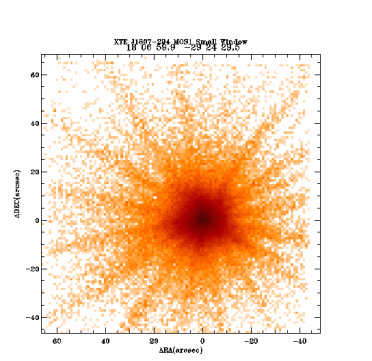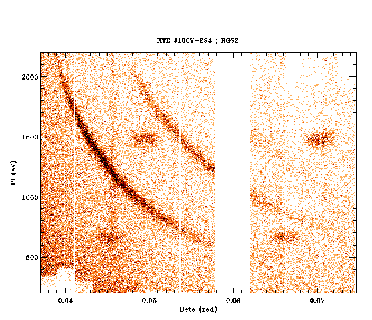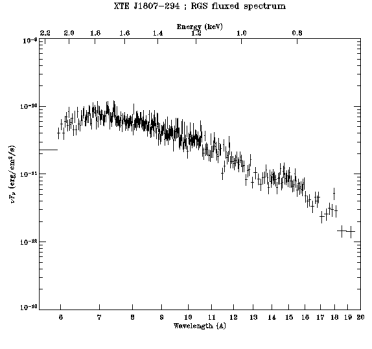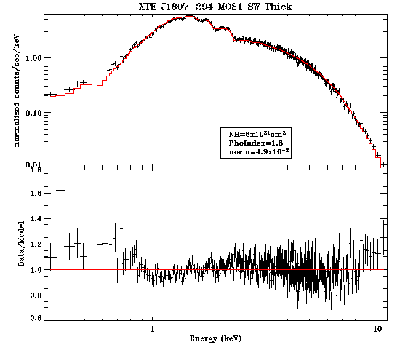xtej1807 - XMM-Newton
XMM-Newton Observation of XTE J1807-294
Events
- The millisecond X-rays pulsar XTE J1807-294, was discovered by XTE on February 21 (Markwardt et al., IAUC/ 8080).
- This pulsar was approved by the XMM-Newton SOC for a ToO observation, started on 2003-03-22T13:40:27Z under ObsId=01579601 during XMM-Newton's revolution number 0601.
- EPIC pn was operated in timing mode, MOS1 in Small Window mode, and MOS2 in Full Frame mode.
- The pointing coordinates were RA = 18:07:00.0 and Dec = -29:24:30, after Chandra results reported in IAUC/8095. The uncertainty in coordinates was quoted as being about 1 arcsecond.
- Due to a problem in the field acquisition, the RGS and EPIC MOS exposures started with the source offset by 1arcmin. A refinement of the pointing brought the target well within the MOS1 Small Window and pn timing collecting areas. The preliminary EPIC source position of XTE J1807-264 has been determined as RA = 18:06:59.9 and Dec -29:24:29.5, within 1arcsec of the reported Chandra position.
Data
- The Observation Data File (ODF) is available here as 0157960101.tar.gz.
- The Pipeline Products are now also available in the ftp area. Details of the Pipeline process can be found here
Preview of XMM-Newton images (click on the images to see high resolution versions)
MOS1 Small Window image
Due to the extremely high brightness of the source, the mirror support construction of the XMM-Newton X-ray mirrors is reflected in the X-ray image as a number of radially oriented 'spokes'.
"Banana Plot" of the RGS2 spectrum showing up to the second dispersion order
Quick look analysis
RGS 1st order fluxed spectrum
The RGS first order spectrum of XTE J1807-294 showed a high count rate of 0.5 counts/sec. The decrease of the flux at long wavelengths is consistent with an Hydrogen column density of the order of 6x1021 cm-2. The observed flux is in the range 1-2 keV is 3.x10-11 erg/cm2/s.
EPIC spectra
The count rate was 11 counts/sec in EPIC-MOS1 (the PSF-core in EPIC-MOS2 was strongly piled-up). In the following figure we show the EPIC-MOS1 spectrum with the best fit to an absorbed power-law (in red).
- Removed a total of (1) style text-align:center;
- Converted a total of (4) center to div.








































 Sign in
Sign in
 Science & Technology
Science & Technology



